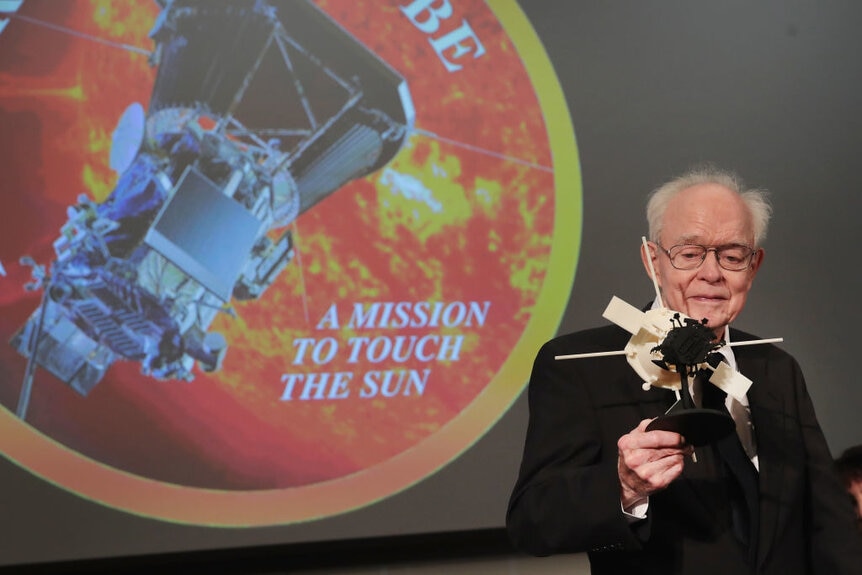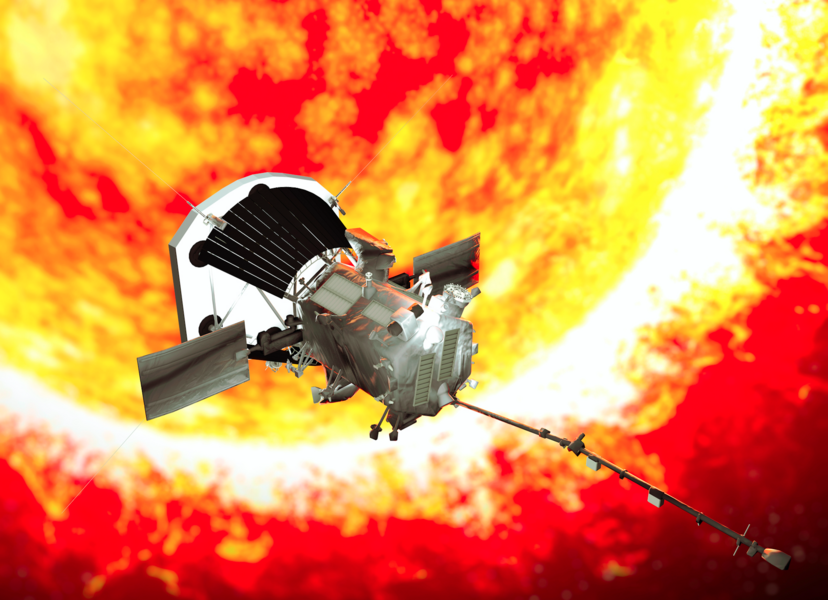Create a free profile to get unlimited access to exclusive videos, sweepstakes, and more!
NASA's Parker Solar Probe makes closest, fastest pass of the sun than any spacecraft

Winter may be spreading its chill across America, but things are definitely heating up for NASA's historic Parker Solar Probe (PSP), as the dauntless spacecraft began delivering data this past week directly from its epic mission to unravel the mysteries of the sun.
Launched back in August 2018 and named after University of Chicago astrophysicist Dr. Eugene Parker, who first presented the notion of solar winds, this dramatic $1.5 billion odyssey was designed to assist scientists in deciphering the intricate mechanics of the shining star in our sky.
Like the ambitious goals of the astronauts in Ray Bradbury's solar-themed short story, "The Golden Apples of the Sun," the Parker Solar Probe has already been breaking records in flying faster and closer to the sun than any other man-made object in history.
Mission team members are mostly focused on uncovering a pair of unsolved puzzles regarding the inner workings of the sun: just how the solar wind, a violent stream of particles constantly flowing from the sun, accelerates to incredible velocities; and why the sun's corona, or outer atmosphere, is so much hotter (2 million degrees Fahrenheit) than its solar surface (11,000 degrees Fahrenheit).
Fortified and protected by a 4.5-inch-thick carbon-composite shield, the craft and its sensitive instruments will dip down into the sun's scorching corona for a close encounter every 5+ months for a never-seen look inside its atomic fires.
Outlined in four newly published reports, the first two perihelion passes occurring in November 2018 and April 2019 brought the PSP within 15 million miles of the solar surface, which is the closest pass to date. Prior to this, the next closest a craft came to the sun was 26.55 million miles when Helios 2 dove in for an intimate peek in 1976.
At that time, Helios 2 also set a world record for the fastest speed relative to the sun, at 153,454 mph. This record was bested by NASA's Juno orbiter in July 2016, when it topped 165,000 mph on its its rendezvous with Jupiter. However, PSP shattered both records in the midst of its first perihelion pass in November, when the sun's powerful gravity rocketed the craft to 213,243 mph.
Findings from the Fields Experiment, one of four targeted studies, reveal that slow solar winds are not only emanating from large coronal holes similar to fast solar winds, but also emerging from smaller patches situated near the solar equator. Fields also recorded sudden reversals in the solar magnetic field surging past the spacecraft where the field often quickly shifted orientation 180 degrees flipped back again after a few seconds or minutes, possibly due to plasma jets.
Another particle-observing experiment, ISoIS, has detected radical proton, electron, and ion bursts that go unnoticed by Earth-based instruments.
"It's amazing — even at solar minimum conditions, the sun produces many more tiny energetic particle events than we ever thought," said Princeton University's David McComas, ISoIS principal investigator and study lead author, in a statement. "These measurements will help us unravel the sources, acceleration, and transport of solar energetic particles and ultimately better protect satellites and astronauts in the future."
Watch the 92-year-old Dr. Parker react to the initial findings of the intrepid craft that bears his name in the touching video below:
Many mysteries remain, but the PSP team has five more years of mission time to solve these puzzles, as the probe will keep studying the sun until 2025, with its perihelion passes inching closer and closer to the cosmic inferno, using flybys of Venus for path corrections.
Its orbital period is currently calculated at approximately 150 Earth days, but that will be diminished to 88 days by the end of the mission. The spacecraft's grand finale will bring it within 3.83 million miles of the sun's surface at a blistering 430,000 mph, a dizzying speed even Santa's magic sleigh could never match.
















